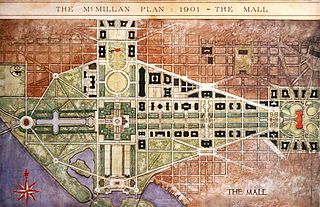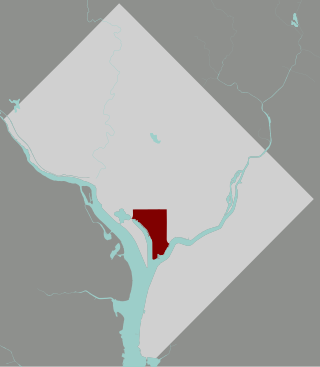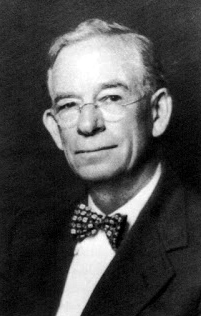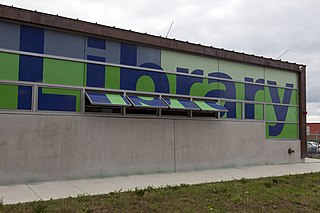
Georgetown is a historic neighborhood and commercial district in Northwest Washington, D.C., situated along the Potomac River. Founded in 1751 as part of the colonial-era Province of Maryland, Georgetown predated the establishment of Washington, D.C. by 40 years. Georgetown was an independent municipality until 1871 when the United States Congress created a new consolidated government for the entire District of Columbia. A separate act, passed in 1895, repealed Georgetown's remaining local ordinances and renamed Georgetown's streets to conform with those in Washington, D.C..

Anacostia is a historic neighborhood in Southeast Washington, D.C. Its downtown is located at the intersection of Good Hope Road and Martin Luther King Jr. Avenue. It is located east of the Anacostia River, after which the neighborhood is named.

The Palisades, or simply Palisades, is a neighborhood in Washington, D.C., along the Potomac River, running roughly from the edge of the Georgetown University campus to the D.C.-Maryland boundary.

Cleveland Park is a residential neighborhood in the Northwest quadrant of Washington, D.C. It is located at 38°56′11″N77°3′58″W and bounded approximately by Rock Creek Park to the east, Wisconsin and Idaho Avenues to the west, Klingle and Woodley Roads to the south, and Rodman and Tilden Streets to the north. Its main commercial corridor lies along Connecticut Avenue NW, where the eponymous Cleveland Park station of the Washington Metro's Red Line can be found; another commercial corridor lies along Wisconsin Avenue. The neighborhood is known for its many late 19th century homes and the historic Art Deco Uptown Theater. It is also home to the William L. Slayton House and the Park and Shop, built in 1930 and one of the earliest strip malls.

Brookland, also known as Little Rome or Little Vatican, is a neighborhood located in the Northeast (NE) quadrant of Washington, D.C. It is best known for its numerous Catholic institutions, including schools, religious communities, shrines, institutes, and other organizations built and based around the Catholic University of America.

Sir David Frank Adjaye is a Ghanaian-British architect. He is known for having designed many notable buildings around the world, including the National Museum of African American History and Culture in Washington, D.C. Adjaye was knighted in the 2017 New Year Honours for services to architecture. He is the recipient of the 2021 Royal Gold Medal, making him the first African recipient and one of the youngest recipients. He was appointed to the Order of Merit in 2022.

The McMillan Plan is a comprehensive planning document for the development of the monumental core and the park system of Washington, D.C., the capital of the United States. It was written in 1902 by the Senate Park Commission. The commission is popularly known as the McMillan Commission after its chairman, Senator James McMillan of Michigan.

The Southwest Waterfront is a neighborhood in Southwest Washington, D.C. The Southwest quadrant is the smallest of Washington's four quadrants, and the Southwest Waterfront is one of only two residential neighborhoods in the quadrant; the other is Bellevue, which, being east of the Anacostia River, is frequently, if mistakenly, regarded as being in Southeast

Bellevue is a residential neighborhood in far Southeast and Southwest in Washington, D.C., United States. It is bounded by South Capitol Street, one block of Atlantic Street SE, and 1st Streets SE and SW to the north and east; Joliet Street SW and Oxon Run Parkway to the south; Martin Luther King Jr. Avenue SE, Shepherd Parkway, 2nd Street SW, and Xenia Street SW to the west. Bellevue was created from some of the earliest land patents in Maryland, and draws its name from a 1795 mansion built in the area. Subdivisions began in the 1870s, but extensive residential building did not occur until the early 1940s. Bellevue is adjacent to a number of federal and city agency buildings.

The U.S. Commission of Fine Arts (CFA) is an independent agency of the federal government of the United States, and was established in 1910. The CFA has review authority over the "design and aesthetics" of all construction within Washington, D.C. In accordance with the Old Georgetown Act, the CFA appoints the Old Georgetown Board. The Old Georgetown Board has design review authority over all semipublic and private structures within the boundaries of the Georgetown Historic District. The CFA was granted approval authority by the Shipstead-Luce Act over the design and height of public and private buildings which front or abut the grounds of the United States Capitol, the grounds of the White House, Pennsylvania Avenue NW extending from the Capitol to the White House, Lafayette Square, Rock Creek Park, the National Zoological Park, the Rock Creek and Potomac Parkway, Potomac Park, and the National Mall and its constituent parks.
The District of Columbia Public Library (DCPL) is the public library system for Washington, D.C. The system includes 26 individual libraries including Martin Luther King Jr. Memorial Library, DCPL's central library.
The Mount Pleasant Library at 1600 Lamont Street, NW in Washington, DC is a branch of the District of Columbia Public Library System that opened in May 1925, and is the third oldest public library building still in use in Washington.

Davis Brody Bond is an American architectural firm headquartered in New York City, New York, with additional offices in Washington, DC and São Paulo, Brazil. The firm is named for Lewis Davis, Samuel Brody, and J. Max Bond Jr. and is led by five partners: Steven M. Davis, William H. Paxson, Carl F. Krebs, Christopher K. Grabé, and David K. Williams.

Arthur B. Heaton was an American architect from Washington, D.C. During his 50-year career Heaton designed over 1,000 commissions, including many notable buildings listed on the National Register of Historic Places (NRHP). He was the first supervising architect of the Washington National Cathedral and one of several local architects responsible for designing many of the buildings in the Burleith, Cleveland Park, Kalorama Triangle, and Woodley Park neighborhoods.

The architecture of Seattle, Washington, the largest city in the Pacific Northwest region of the U.S., features elements that predate the arrival of the area's first settlers of European ancestry in the mid-19th century, and has reflected and influenced numerous architectural styles over time. As of the early 21st century, a major construction boom continues to redefine the city's downtown area as well as neighborhoods such as Capitol Hill, Ballard and, perhaps most dramatically, South Lake Union.

Bellevue/William O. Lockridge Neighborhood Library is part of the District of Columbia Public Library (DCPL) System. It was originally opened to the public in 1959. It was renovated with a design by British architect David Adjaye and named after activist William O'Neal Lockridge.

The Georgetown Neighborhood Library is a branch of the District of Columbia Public Library located in the Georgetown neighborhood of Washington, D.C. Established by an Act of Congress in 1934, the library houses the collection of its predecessor Peabody Library, which was founded in 1872 by a donation of George Peabody. The library opened in 1935 upon completion of the building, designed by Nathan C. Wyeth in the Colonial Revival style. It holds the only collection of materials relating to Georgetown's history in the public library system.

The Cleveland Park Neighborhood Library is a branch of the District of Columbia Public Library in the Cleveland Park neighborhood of Washington, D.C. It is located at 3310 Connecticut Avenue NW. A library building opened on the site in 1953 and was replaced in 2018 by a larger facility that was built at a cost of $19.7 million. The new library's design garnered praise and plaudits; DCist described it as "strikingly stylish" and it won the 2019 Urban Catalyst award from the local chapter of the American Institute of Architects.

The Lamond-Riggs/Lillian J. Huff Neighborhood Library is a branch of the District of Columbia Public Library in the Queens Chapel neighborhood of Washington, D.C. It is located at 5401 South Dakota Avenue NE. Residents had requested a library for the area as early as 1957; the current building opened in 1983 at a cost of $2 million.

The Benning / Dorothy I. Height Neighborhood Library is a branch of the District of Columbia Public Library system, located in Benning, a neighborhood in Northeast Washington, D.C.


















